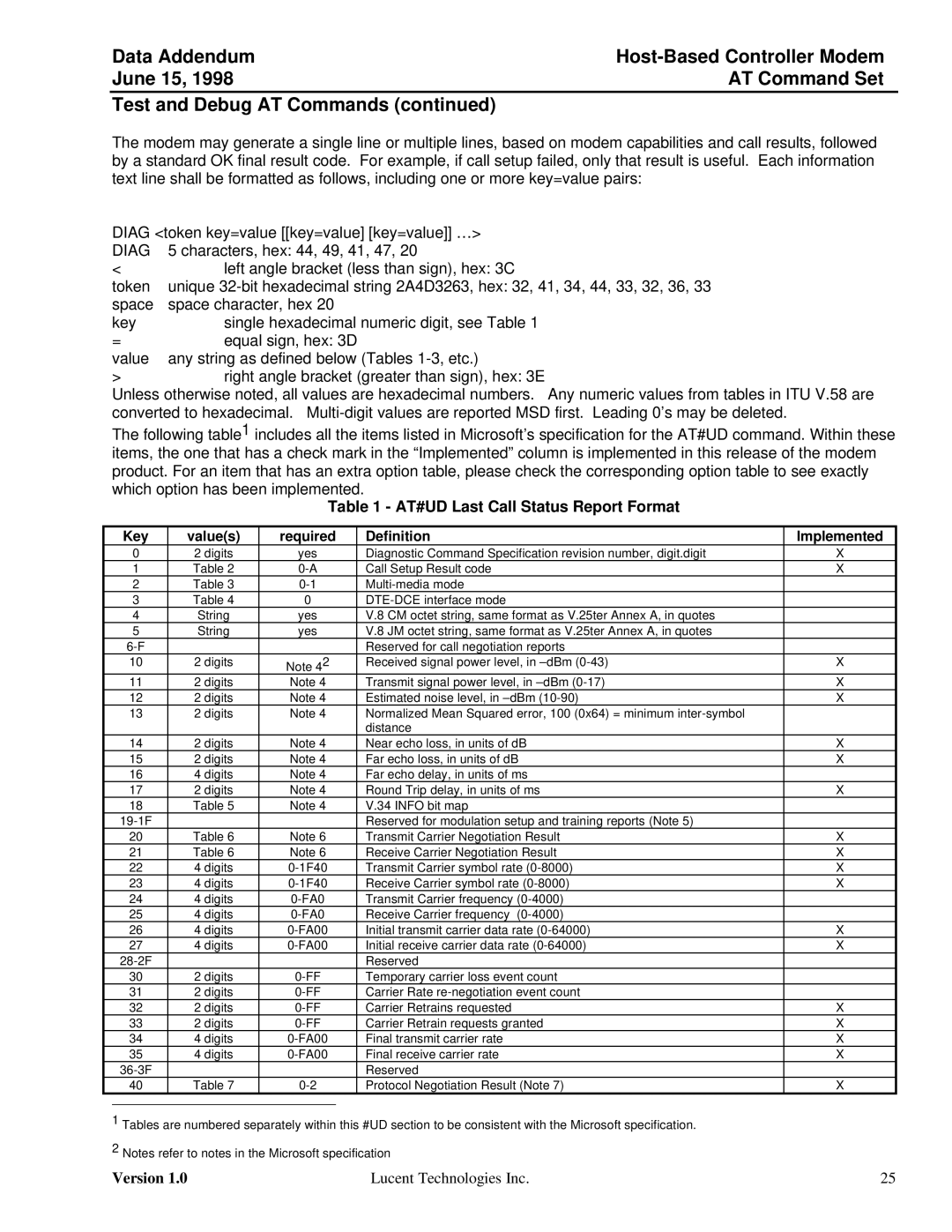Host-Based Controller Modem AT specifications
Lucent Technologies Host-Based Controller Modem AT represents a significant advancement in modem technology, particularly in the realm of telecommunications and data transmission. This modem, renowned for its efficiency and versatility, is characterized by a host-based architecture, which differentiates it from traditional modems that rely heavily on dedicated hardware.One of the main features of the Lucent Technologies Host-Based Controller Modem AT is its ability to leverage the processing power of the host computer. By utilizing the host's CPU for data encoding and decoding tasks, the modem can reduce the need for specialized hardware components, allowing for a more cost-effective solution. This design not only facilitates lower manufacturing costs but also enhances the overall performance due to the utilization of the host's computational capabilities.
Another notable characteristic is its compliance with the AT command set, which standardizes communications between the modem and the host system. This ensures compatibility with a wide range of software applications and operating systems. The AT command set allows users to control modem functions easily, making it simpler to configure settings, initiate connections, and manage data transfer processes.
The modem also supports various communication protocols, such as V.90 and V.92, enabling high-speed data transmission over traditional telephone lines. With download speeds of up to 56 Kbps and upload speeds of up to 48 Kbps, the Lucent Technologies Host-Based Controller Modem AT is particularly suitable for Internet browsing, email, and other online activities demanding robust data throughput.
Additionally, the modem features built-in error correction and data compression protocols, such as V.42 and V.44, further enhancing the quality and speed of data transmission. These protocols help minimize the impact of line noise and ensure efficient use of bandwidth, leading to improved connection stability and data integrity.
In terms of connectivity, the Lucent Technologies Host-Based Controller Modem AT typically interfaces via a standard serial or USB port, making it compatible with most modern computers. Its compact design and ease of installation make it an appealing choice for both personal and professional use.
Overall, the Lucent Technologies Host-Based Controller Modem AT showcases significant innovation in modem technology, offering users a reliable and efficient solution for high-speed data communications. Its host-based architecture, adherence to the AT command set, and support for advanced communication protocols position it as a vital tool in the ever-evolving landscape of digital connectivity.
